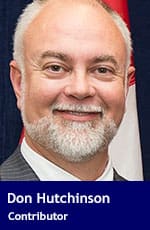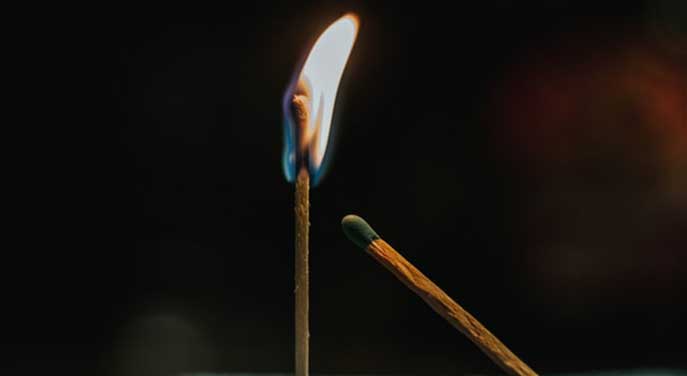Mainstream media may have lit the fuse on church burnings, but there were accomplices
 Mainstream media lit a fuse, and churches are burning. Nearly two dozen to date and a greater number have been vandalized with graffiti, paint-dipped handprints, and splatter.
Mainstream media lit a fuse, and churches are burning. Nearly two dozen to date and a greater number have been vandalized with graffiti, paint-dipped handprints, and splatter.
Some congregations have accepted acts of vandalism as a visual lesson on the road to reconciliation. Others wonder if their place of worship is safe, or a safe place to assemble.
Mainstream media was not alone. There were accomplices.
The executive director of the British Columbia Civil Liberties Association (BCCLA) on June 30 tweeted “Burn it all down” in a quote tweet of VICE World News’ headline “Two more Catholic Churches have been torched in Canada ….”
Academics and the BCCLA board defended executive director Harsha Walia, “confident that her comments were not meant to be taken literally.” Some B.C. Indigenous chiefs supported their long-time ally, carefully avoiding mention of her four-word tweet.
Walia’s four words have been repeated by others. They have proven divisive among those with whom she had established herself as a trusted ally. Choosing not to recant, she instead resigned two weeks later. An apology and withdrawal might have proven more beneficial, and perhaps sustained her career.
Unlike with incidents of hate directed at other religious communities or their places of worship, Canada’s Prime Minister has not yet provided an official statement about the burning of Christian churches.
Trudeau did not publicly address the issue until questioned in a press briefing at the end of a week when four Catholic churches on First Nations reserves had been burned to the ground. He tepidly offered that burning churches in response to the confirmation of unmarked graves was “unacceptable and wrong,” adding, however, that it was “understandable” because the trauma and anger are real.
Arson is illegal. So is encouraging arson. It is immoral to set fire to the property of another. And it has long been understood to be unsupportable – not understandable – to deface, damage, or denigrate a place of worship. Doing so is a form of attack, a threat against those who worship there.
Every residential school on which property is now being examined for unmarked burial plots was funded by the federal government. For over a century, the federal government was unwilling to pay the expense of transporting dead bodies home for burial. Would the Prime Minister and his government be as understanding of buildings burning in the night if they were government workplaces? Would government workers feel safe? Of course not.
The most recent church torched in the darkness was built by Egyptian Coptic Christians who emigrated to Canada to escape persecution because of policies from a Muslim government and practices of Muslim fellow citizens, including arson of churches. Would it be understandable if they now retaliate by burning mosques? Of course not.
We live in what Ed Stetzer has coined the age of outrage. Two hundred and forty character tweets beget re-tweets and more tweets. Single image memes are virally shared. Thirty-second news stories run in a cycle for 24 hours. The first headline begets imitation in the second.
Breaking news headlines in the final days of May were variations on “215 children’s bodies discovered in mass grave at Indian Residential School in Kamloops, B.C.” The initial headline and 500-word narrative were shared almost instantaneously on news organization websites across Canada, indeed around the world.
Absent from the days’ abbreviated news from Kamloops, and too often reports of each new “discovery,” were the words of local chiefs explaining that ground-penetrating radar searches were on grounds where burials were long known to have taken place. Individual graves were confirmed by ground anomalies, not bodies. Grave markers, likely wooden crosses, might at one time have been present. No less tragic, but significantly less inflammatory.
The firefighters in this scenario have not been media, human rights advocates, nor Canada’s political governors. Those issuing messages of prevention and prohibition have been Indigenous spokespeople and chiefs from coast to coast to coast.
Chief Rosanne Casimir of the Tk’emlups te Secwépemc First Nation said in her first interview following the revelation of 215 confirmed gravesites at the former Kamloops Indian Residential School, “We had a knowing in our community that we were able to verify.” The effort to confirm the burials started in the early 2000s. The current stage of the work with ground-penetrating radar would continue to complete a survey of the former school property. Funding is being provided by the province of British Columbia and direction by the Tk’emlups te Secwépemc First Nation.
Within days, the first church vandalized was on her own reserve. Chief Casimir said the band was “deeply disturbed to learn that the Saint Joseph’s church was vandalized,” setting a tone not carried forward in widespread media coverage, adding “We respect the choices that Tk̓emlúps te Secwépemc ancestors made, over 100 years ago, to erect this church.”
The next month 751 unmarked graves were confirmed on the grounds of the Marieval Residential School in Saskatchewan. Chief Cadmus Delorme of the Cowessess First Nation explained the individual graves may have been previously marked, some with headstones reportedly removed in the 1960s and others with wooden crosses lost to time and the elements. He noted, “In the longevity of this country, we’re going to have some high moments, and we’re going to have some low moments in the reality of our history we all inherited.”
Following Canada Day protests, former judge, senator and TRC commissioner Murray Sinclair commented, “The people who commit these acts and those who condone them, need to understand how much they set back any chance of moving the dialogue on changing the bad relationship we have, forward. Do you really think this is going to help?”
Sinclair had forewarned us following the initial report from Kamloops that, based on the 2015 TRC report, Canadians should prepare for similar findings at other former residential schools.
Assembly of First Nations Grand Chief Perry Bellegarde said, “Destroying property will not help us build the peaceful, better and accepting Canada we all want and need. I believe in processes that unite rather than divide. Violence must be replaced by turning to ceremony and all that our old people taught us about peaceful co-existence and mutual respect. Thoughtful dialogue, not destruction, is the way through this.”
Many more chiefs and Indigenous pastors have spoken about the loss to their communities because of the destruction of church buildings that held memories, were places of worship and of consolation in trials. Pentecostal minister Jenn Allan-Riley, whose mother attended residential school, stated simply “Burning down churches is not in solidarity with us Indigenous people.”
The fuse was lit when journalists paid little heed to the words of Thucydides written 25 centuries ago in his History of the Peloponnesian War; words shared in a variety of ways in journalism schools and by mentors.
“Most people, in fact, will not take the trouble in finding out the truth, but are more inclined to accept the first story they hear.”
The breaking news presented by media was incendiary, not journalistic.
Indigenous spokespeople have tried to remind us that Volume 4 of the Final Report of the Truth and Reconciliation Commission of Canada (TRC) is called ‘Canada’s Residential Schools: Missing Children and Unmarked Burials’ because it documents this historic reality. Of the TRC’s 94 Calls to Action, 71 to 76 directly address this issue. They include:
- We call upon the federal government to work with churches, Aboriginal communities, and former residential school students to establish and maintain an online registry of residential school cemeteries, including, where possible, plot maps showing the location of deceased residential school children.
- We call upon the federal government to work with provincial, territorial, and municipal governments, churches, Aboriginal communities, former residential school students, and current landowners to develop and implement strategies and procedures for the ongoing identification, documentation, maintenance, commemoration, and protection of residential school cemeteries or other sites at which residential school children were buried. This is to include the provision of appropriate memorial ceremonies and commemorative markers to honour the deceased children.
Perhaps Thucydides’ words also reveal our own complicity in accepting an incomplete, glorified Canadian history; and then acting on incomplete, glorified headlines, tweets and memes.
Most Canadians have paid little heed to earlier commentaries on our incomplete history provided in the 1996 Report of the Royal Commission on Aboriginal Peoples or the 2015 Final Report of the Truth and Reconciliation Commission of Canada. Fewer likely remember the church apologies of the 1980s and ‘90s or know they initiated reconciliation efforts that have been ongoing for decades. Most have only 30-second news clip knowledge of Prime Minister Stephen Harper’s 2008 apology from the Government of Canada, an apology that also initiated the Truth and Reconciliation Commission as one next step in the process of reconciliation.
We may all be somewhat guilty of not reading beyond a headline before drawing conclusions that inflamed our emotions.
But does that in any way excuse the intentional burning of church buildings – places of worship, as well as comfort and consolation in time of need, structures that hold collective memories for communities of people?
It’s the person with the box of matches or dollar store lighter who actually starts the fire. But words publicly stated as breaking news or a meme shared on our preferred choice of social media may prove to contribute inspiration for the unacceptable: to torch a church, any church, under cover of night.
While our hearts are inflamed at the stark revelation of a dark history, Canadians are encouraged to take a deep breath and to resist hatefully judging today’s churches and people who have inherited a sordid past. Instead, let’s choose to listen to Indigenous voices calling us to build relationships, rather than destroy property, in a concerted national effort to move from apology to reconciliation.
Don is the Principal of Ansero Services, a Canadian charity furthering the task of Christian witness through partnering for religious freedom, and author of Under Siege: Religious Freedom and the Church in Canada at 150 (1867–2017).
Don is a Troy Media contributor. For interview requests, click here.
The views, opinions and positions expressed by columnists and contributors are the authors’ alone. They do not inherently or expressly reflect the views, opinions and/or positions of our publication.
© Troy Media
Troy Media is an editorial content provider to media outlets and its own hosted community news outlets across Canada.


Thank you for shining some helpful light on this very troubling subject. We need our media and individuals on social media to understand their important role in learning the facts, listening very carefully, building bridges and making peace.
Thanks for the comments and well stated opinion. I just heard today, august 8, that there were widespread incidents of church burnings in Canada. Amazing how over 50 church burning incidents in neighboring Canada are not considered news worthy by so-called mainstream media in the US. I did find some small articles , but none of this seems to have been headline or leading story news.